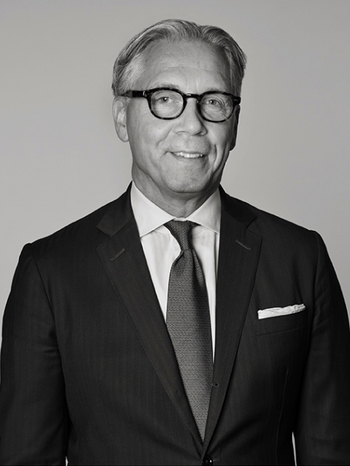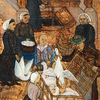Hilding Linnqvist
"Fågeltorget i Chinon"
Signed with monogram and dated Chinon 1921. Panel 100 x 109 cm.
Provenance
Carl Erik Heyman.
The collection of Oscar Stern, Stockholm.
Åke Bäckström.
Bukowski Auktioner, auction no. 400, 3 December 1975, cat no. 62.
Private collection, Stockholm (acquired at the above mentioned auction).
Exhibitions
Internationale Kunstausstellung, Dresden. 1926, cat no. 76, with the title "Le Marché à Chinon", illustrated in exhibition catalogue p. 40.
Parisutställningen, 1929, cat no. 2.
Konstakademien, Stockholm, "Hilding Linnqvist", exhibition arranged by Föreningen för nutida konst, 9 March - 7 April 1940, cat no. 82.
Riksförbundet för bildande konst, exhibition no. 51, "Modernt Svenskt Måleri ur Oscar Sterns samling" 1947.
Kunstnernes Hus, Oslo, 1954, cat no. 18.
Liljevalchs Konsthall, Stockholm, "Hilding Linnqvist", October 1957, cat no. 78 (with the title "Fågeltorg i fransk småstad").
Konstakademien, Stockholm, "Hilding Linnqvist - Från skilda världar", 8 - 30 March 1980, cat no. 6.
Moderna Museet, Stockholm, 26 December 1986 - 22 February 1987, cat no. 38.
Göteborgs konstmuseum, 7 March - 10 May 1987, cat no. 38
Färg & Form, Stockholm, exhibition no. 893, "Final", 16 May - 15 June 2002.
Literature
Konst i svenska hem, vol 4, listed in collection 228 "Oscar Stern, Dr. Ing., Bergsgården, Kungl Djurgården, Stockholm", illustrated p. 169
Folke Holmér, "Hilding Linnqvist", SAK, 1955, illstrated p. 95 and mentioned p. 88.
Artist
Hilding Linnqvist is one of Sweden's most important naïve painters and became established and known early on for his colourful compositions. Linnqvist was a key figure in lyrical naivism in Sweden, with a style of painting that departed from the technical perfection he had been trained in. Several Swedish artists joined this innovative direction for the time. After studying at the Technical School and the Royal Swedish Academy of Fine Arts, he was inspired by Edward Munch and Ernst Josephson's malaise art, which led him towards a freer and more uninhibited style of painting. During the 1920s, Linnqvist travelled abroad several times and his colours became brighter and his subjects more detailed.
He later painted coastal scenes and portraits, among other things. By the early 1940s, Hilding Linnqvist was an established and well-travelled artist, as well as a professor at the Royal Academy of Fine Arts in 1939-1941 and the subject of a major exhibition there in 1940.


































